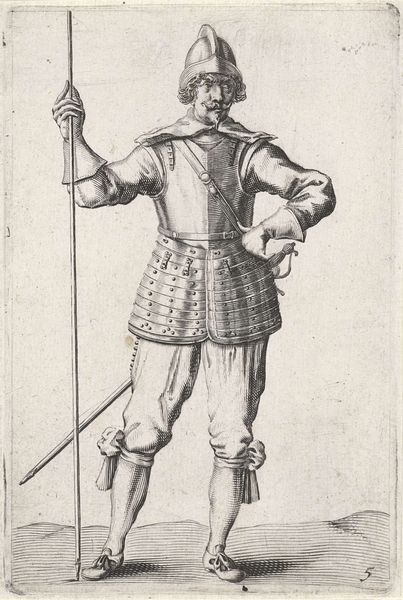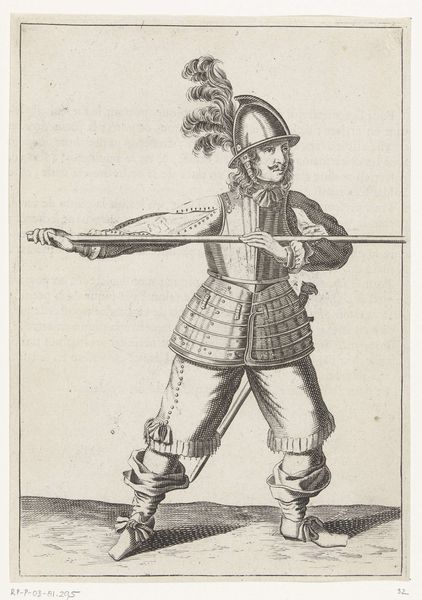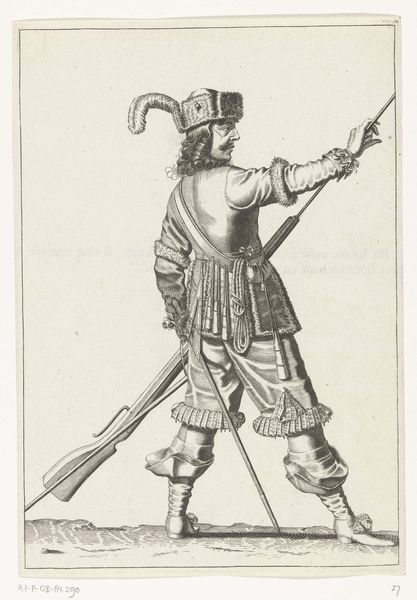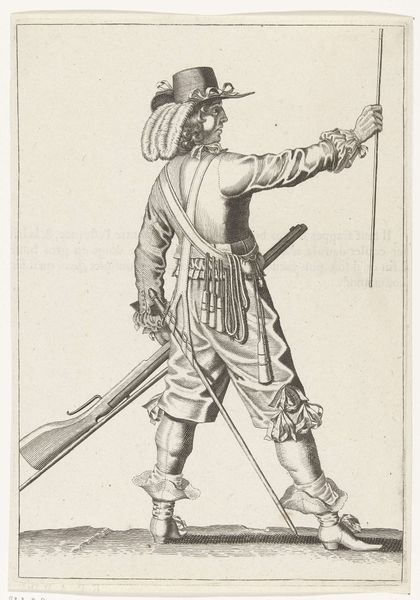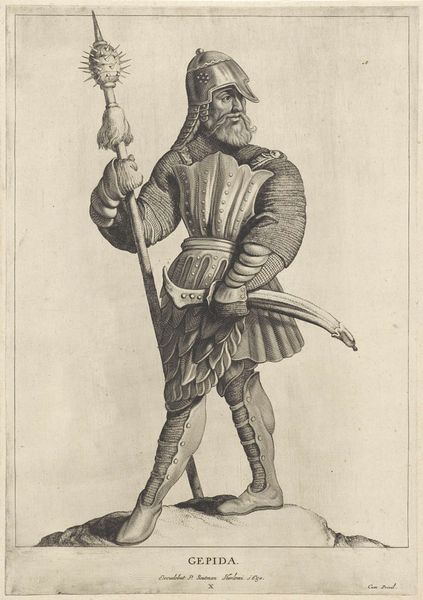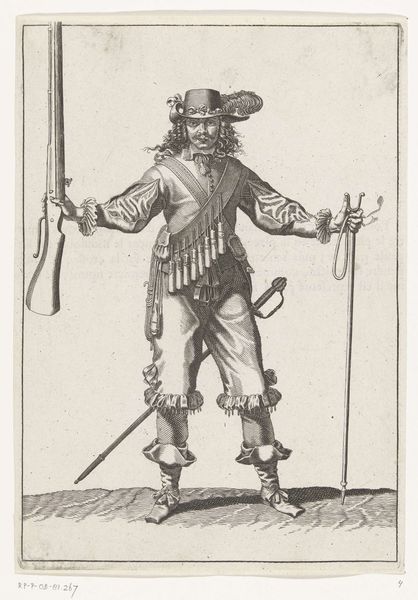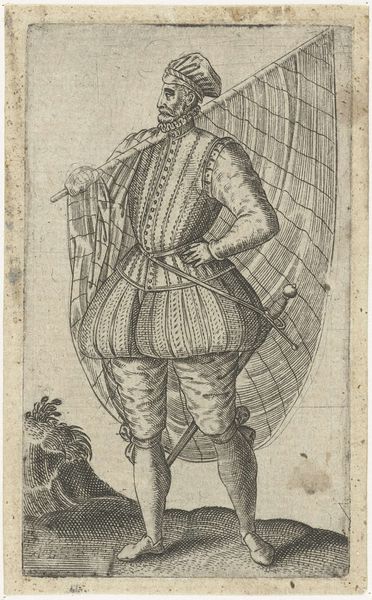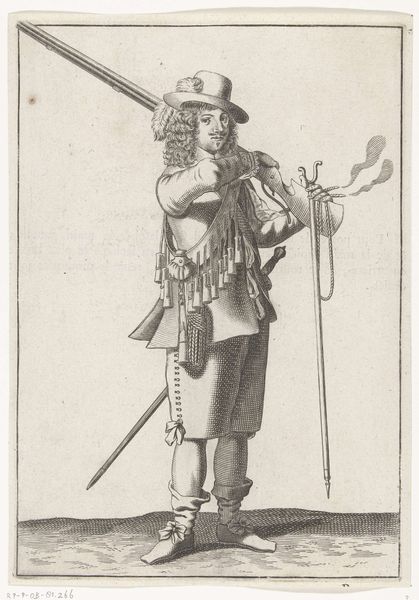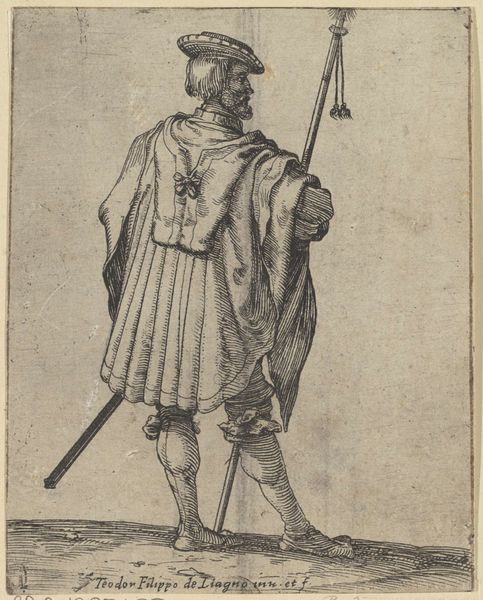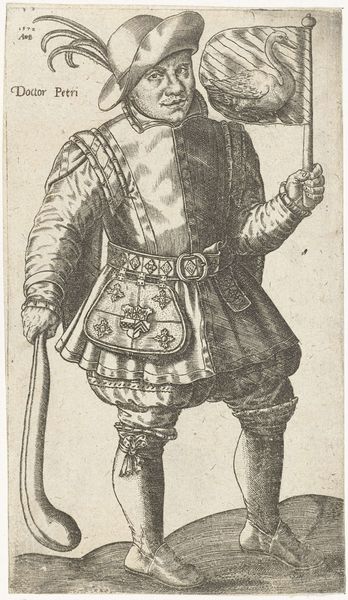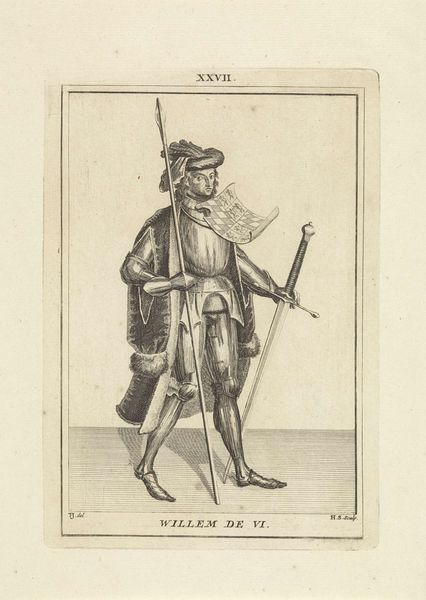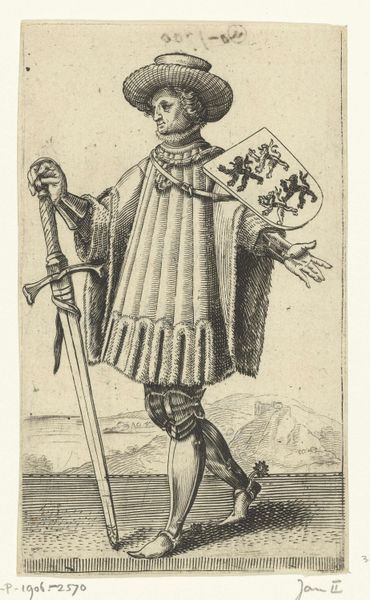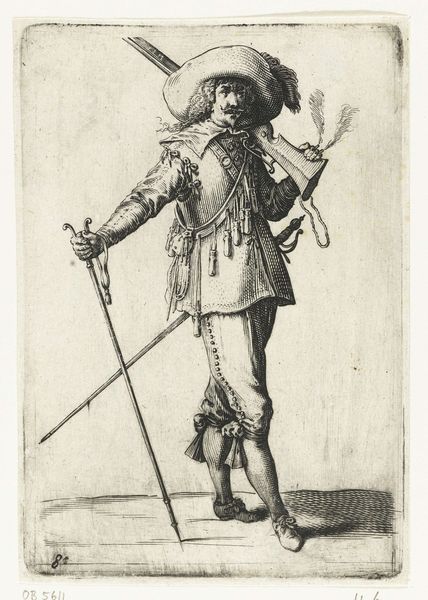
Soldaat, van voren gezien, die zijn spies met zijn rechterhand rechtop vasthoudt, ca. 1645 1645 - 1647
0:00
0:00
intaglio, engraving
#
portrait
#
baroque
#
intaglio
#
portrait drawing
#
history-painting
#
engraving
Dimensions: height 235 mm, width 165 mm
Copyright: Rijks Museum: Open Domain
Curator: Take a look at this engraving; it’s called “Soldaat, van voren gezien, die zijn spies met zijn rechterhand rechtop vasthoudt, ca. 1645”, created sometime between 1645 and 1647 by Petrus Rucholle. It is rendered with intaglio, a technique that allows for fine lines and detailed textures. Editor: Whoa, that soldier is certainly...accessorized! All that armor, plumes—talk about peacocking on the battlefield. I can’t help but imagine the amount of work involved in engraving all of this; talk about detailed textures. It also reminds me, the position of the soldier with the weapon and all, it somehow doesn't translate that easily the violent nature of this activity... Curator: I think you have touched a quite relevant perspective in it. Baroque art was deeply intertwined with socio-political contexts, reflecting and shaping identities but also ideologies of its patrons, who were in that period, the powerful individuals, like kings, or important wealthy families. In this case, for example, it's a way of establishing not only the identity of who is represented, but it seems to function as a symbol or element inside of an environment; perhaps it is trying to show the "fashion" of those days and give insights about society at large. Editor: Fashion? Oh, you are very right, curator, Fashion with a capital F! Look at those bloomers! The shoes, it reminds me of that flamboyant Elizabethan era that for my European roots are impossible not to romanticize with a rock song of the moment, or even put that on a Met Gala. Although this piece may look to someone that has to be very stiff in composition because of the theme of the moment, I like to explore that almost ironic space that perhaps only art allows... Curator: Absolutely! The beauty of analyzing historical artwork lies in exploring these connections, unveiling how these works influence not only history but art as a discipline, or fashion as an economic field as well. It is an invaluable asset and insight for both scholars, artists, but more importantly, as you well stated, regular everyday people. Editor: Yes! Each period represents itself by means of clothing, manners, aesthetics or beliefs, like baroque portraits, an ideal time for understanding power, fashion and even culture—and the artist—or craftsman—certainly captured its spirit here.
Comments
No comments
Be the first to comment and join the conversation on the ultimate creative platform.
